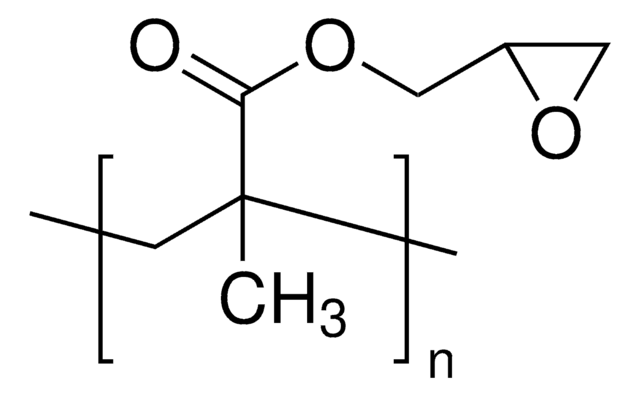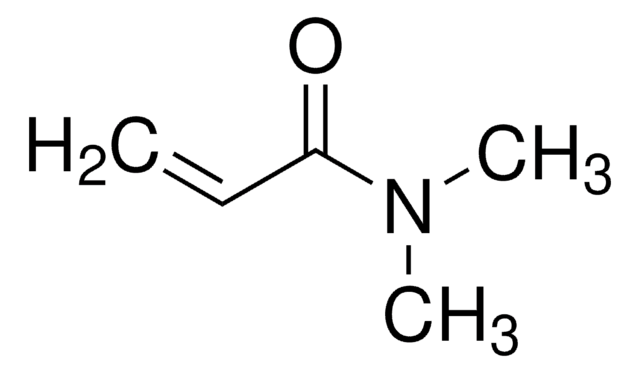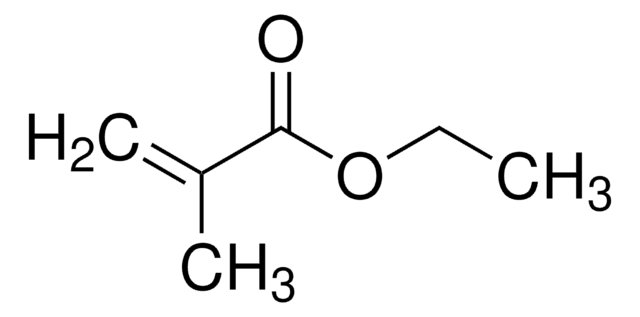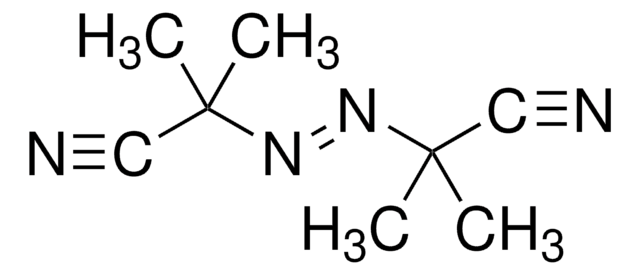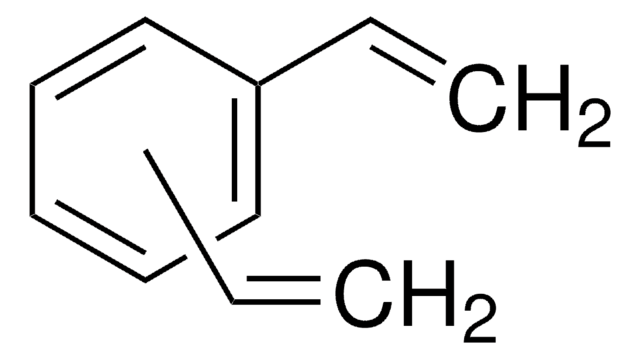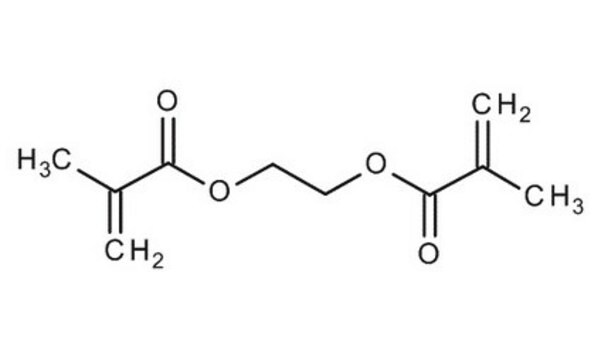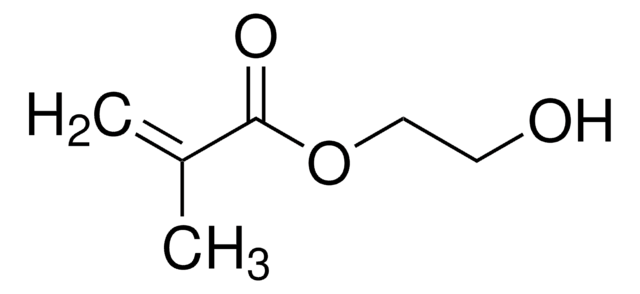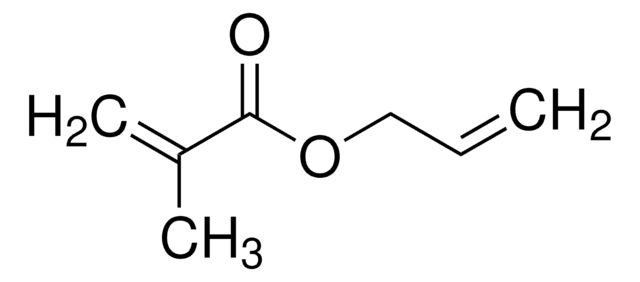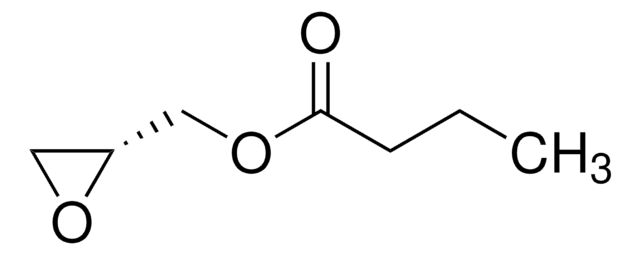151238
Glycidyl methacrylate
97%, contains 100 ppm monomethyl ether hydroquinone as inhibitor
Synonyme(s) :
2,3-Epoxypropyl methacrylate, Methacrylic acid 2,3-epoxypropyl ester
About This Item
Produits recommandés
Niveau de qualité
Essai
97%
Forme
liquid
Contient
100 ppm monomethyl ether hydroquinone as inhibitor
Impuretés
0.02% epichlorohydrin
Indice de réfraction
n20/D 1.449 (lit.)
pb
189 °C (lit.)
Densité
1.042 g/mL at 25 °C (lit.)
Température de stockage
2-8°C
Chaîne SMILES
CC(=C)C(=O)OCC1CO1
InChI
1S/C7H10O3/c1-5(2)7(8)10-4-6-3-9-6/h6H,1,3-4H2,2H3
Clé InChI
VOZRXNHHFUQHIL-UHFFFAOYSA-N
Vous recherchez des produits similaires ? Visite Guide de comparaison des produits
Catégories apparentées
Description générale
Application
Mention d'avertissement
Danger
Mentions de danger
Classification des risques
Acute Tox. 3 Dermal - Acute Tox. 4 Oral - Carc. 1B - Eye Dam. 1 - Muta. 2 - Repr. 1B - Skin Corr. 1C - Skin Sens. 1 - STOT RE 1 - STOT SE 3
Organes cibles
Respiratory system
Code de la classe de stockage
6.1C - Combustible acute toxic Cat.3 / toxic compounds or compounds which causing chronic effects
Classe de danger pour l'eau (WGK)
WGK 3
Point d'éclair (°F)
168.8 °F - closed cup
Point d'éclair (°C)
76 °C - closed cup
Listes réglementaires
Les listes réglementaires sont principalement fournies pour les produits chimiques. Seules des informations limitées peuvent être fournies ici pour les produits non chimiques. L'absence d'indication signifie qu'aucun des composants n'est répertorié. Il incombe à l'utilisateur de s'assurer de l'utilisation sûre et légale du produit.
EU REACH Annex XVII (Restriction List)
Faites votre choix parmi les versions les plus récentes :
Déjà en possession de ce produit ?
Retrouvez la documentation relative aux produits que vous avez récemment achetés dans la Bibliothèque de documents.
Les clients ont également consulté
Global Trade Item Number
| Référence | GTIN |
|---|---|
| G8377-25G | 4061833643907 |
| G8377-25MG | 4061831168853 |
| G8377-1G | 4061835557073 |
| G8377-100G | 4061833630235 |
| G8377-10MG | 4061831168846 |
| G8377-500MG | 4061833643938 |
| G8377-5G | 4061833643945 |
| PHR1514-1G | 4061834418252 |
| 151238-100G | 4061838739063 |
| 151238-18KG | |
| 151238-500G | 4061838739070 |
| 151238-5G | |
| 151238-5KG | 4061832928654 |
Notre équipe de scientifiques dispose d'une expérience dans tous les secteurs de la recherche, notamment en sciences de la vie, science des matériaux, synthèse chimique, chromatographie, analyse et dans de nombreux autres domaines..
Contacter notre Service technique

